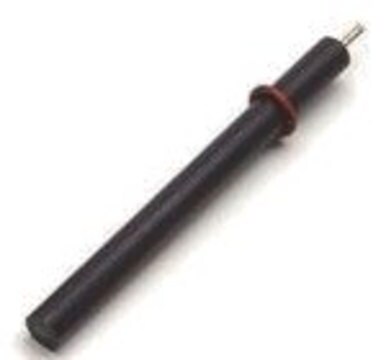GF65427587
Carbon - Vitreous
rod, 100mm, diameter 3.0mm, glassy carbon
Sinônimo(s):
Carbon - Vitreous, VC007915
About This Item
Produtos recomendados
Formulário
rod
fabricante/nome comercial
Goodfellow 654-275-87
C × diâmetro
100 mm × 3.0 mm
cadeia de caracteres SMILES
[C]
InChI
1S/C
chave InChI
OKTJSMMVPCPJKN-UHFFFAOYSA-N
Procurando produtos similares? Visita Guia de comparação de produtos
Descrição geral
Informações legais
Código de classe de armazenamento
13 - Non Combustible Solids
Classe de risco de água (WGK)
nwg
Ponto de fulgor (°F)
Not applicable
Ponto de fulgor (°C)
Not applicable
Escolha uma das versões mais recentes:
Certificados de análise (COA)
It looks like we've run into a problem, but you can still download Certificates of Analysis from our Documentos section.
Se precisar de ajuda, entre em contato Atendimento ao cliente
Já possui este produto?
Encontre a documentação dos produtos que você adquiriu recentemente na biblioteca de documentos.
Os clientes também visualizaram
Nossa equipe de cientistas tem experiência em todas as áreas de pesquisa, incluindo Life Sciences, ciência de materiais, síntese química, cromatografia, química analítica e muitas outras.
Entre em contato com a assistência técnica









